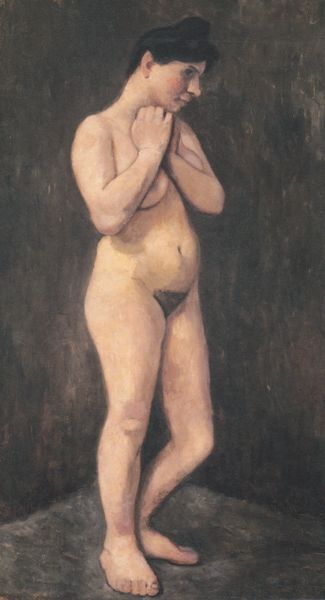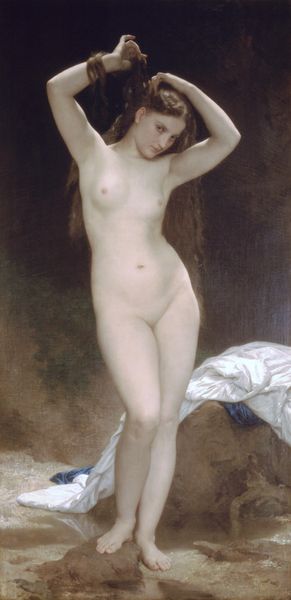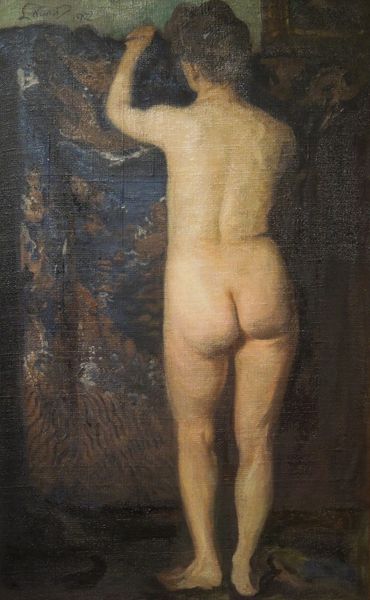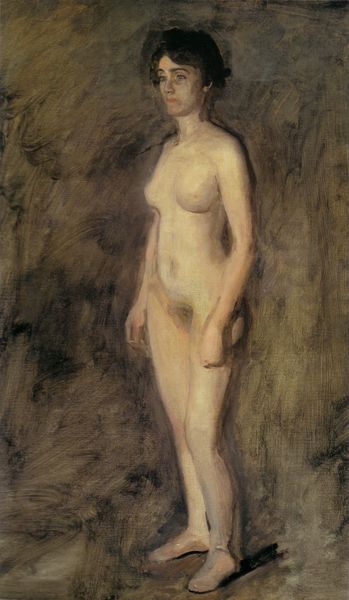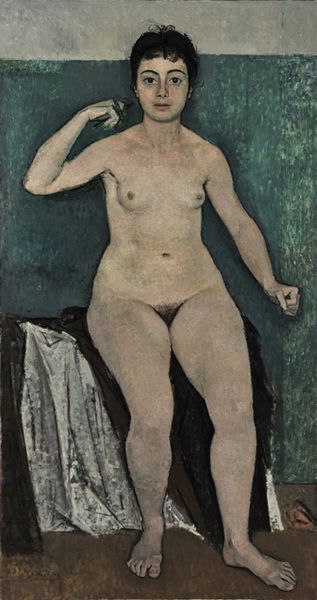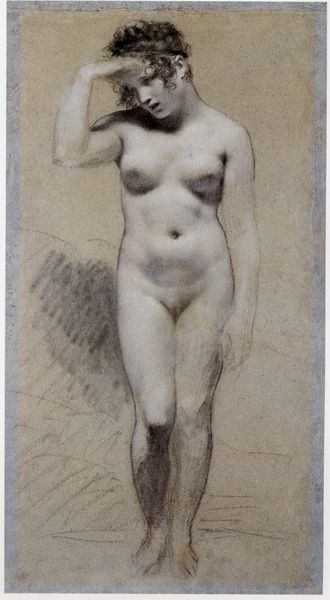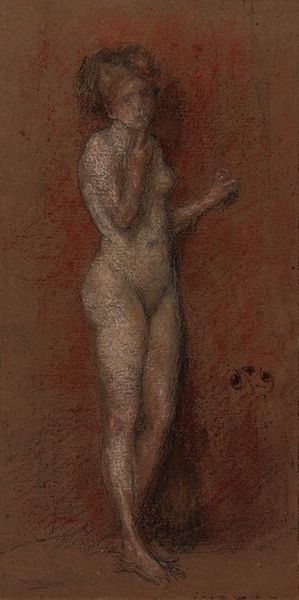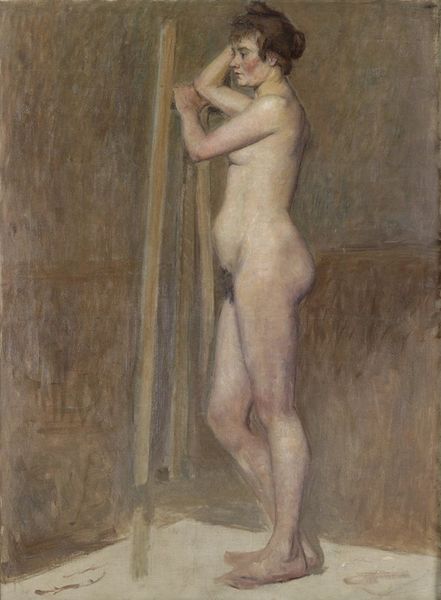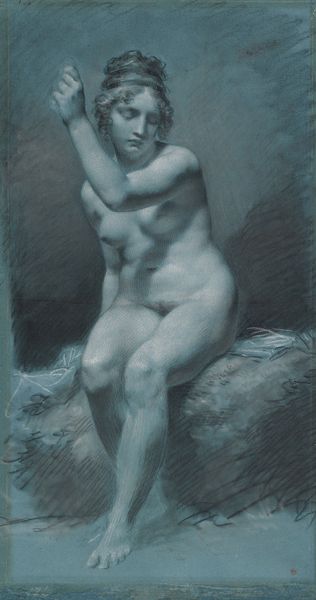
drawing, charcoal
#
drawing
#
german-expressionism
#
charcoal drawing
#
figuration
#
charcoal art
#
expressionism
#
portrait drawing
#
charcoal
#
charcoal
#
nude
Dimensions: 90.5 x 175 cm
Copyright: Public domain
Editor: Here we have Otto Mueller's 1903 charcoal drawing, "Stehender Mädchenakt Mit Dolch (Lukretia)." There's a real sense of foreboding here; the dramatic lighting and the dagger held aloft are quite unsettling. What are your thoughts on this work? Curator: Well, seeing this, I immediately think about the socio-political anxieties prevalent during the rise of German Expressionism. Artists were grappling with a rapidly changing society, and the traditional narratives, particularly around female virtue, were being intensely scrutinized. Consider the story of Lucretia, a Roman noblewoman whose suicide after being raped was seen as a catalyst for the Roman Republic. Editor: Right, so it’s a charged symbol. Curator: Exactly. By presenting a 'Mädchenakt,' or nude girl, in conjunction with this loaded imagery, Mueller is potentially questioning the idealized version of this story. Is this about a loss of innocence? A commentary on power and vulnerability? The fact that she's nude complicates the reading, challenging viewers to consider the politicized nature of female representation at the time. How do you feel the composition contributes to that interpretation? Editor: The pose seems vulnerable, yet she’s holding a weapon. It’s a visual paradox that reinforces the internal struggle she must be facing. It feels… uncomfortable. Curator: Uncomfortable, yes, and intentionally so. The Expressionists aimed to disrupt, to force a confrontation with difficult truths. By using Lucretia as a subject, Mueller taps into a historical narrative to question contemporary morals. It prompts us to think about how art actively participates in the ongoing re-evaluation of cultural myths. Editor: That's fascinating. I'd never considered the political undercurrents within the visual language itself. Curator: Indeed. The public role of art isn't just about pretty pictures; it's about interrogating our shared history and values. Editor: I will definitely be considering the power of that disruption in future viewings of art, thank you.
Comments
No comments
Be the first to comment and join the conversation on the ultimate creative platform.
